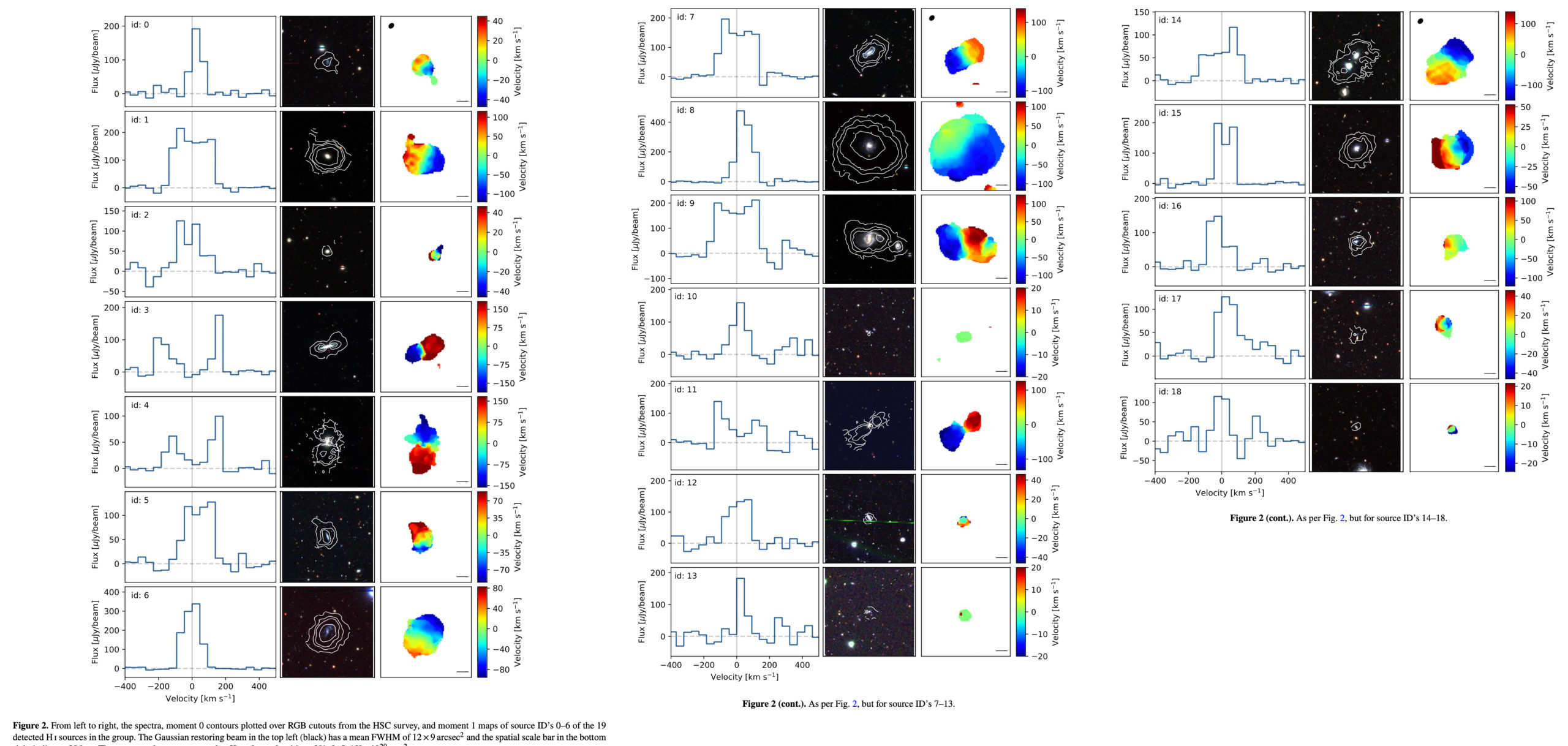When the science world decided to embark on the Square Kilometre Array (SKA) project, serendipitous discovery – essentially chance findings – was boldly cited as a scientific goal.
The MeerKAT telescope is already proving this bet right, as new, previously unidentified galaxies were discovered by the MIGHTEE project team in a well-studied area in the sky. That area, called XMM-LSS has been observed with many telescopes, each looking at different types of light. For example, the XMM-LSS field has been very well studied in X-says. X-ray telescopes can detect haloes of hot gas around galaxies.
The MeerKAT was pointed in the direction of the XMM-LSS field and observed it for 12 hours in radio wavelengths, a much lower energy light than X-rays. At those wavelengths it is cold, neutral hydrogen gas that emits a faint signal that only the most powerful radio telescopes can detect. This cold gas is typically found beyond the visible part of galaxies and plays an important role in their formation and in their evolution.
These observations form part of the early science data of the MIGHTEE project, which looks at light emitted by neutral hydrogen gas in the universe. Reaching the science goals of MIGHTEE is only made possible by the incredible sharp radio eye that is the MeerKAT telescope. With unprecedented resolution and sensitivity, MeerKAT is able to detect the very faint signal from neutral hydrogen.
What emerged when the team analysed the early science data on the IDIA/ilifu research cloud computing infrastructure, was no less than 20 previously undetected galaxies. The research team, including IDIA directors, researchers, post-docs, students and collaborators on the MIGHTEE project analysed these 20 new galaxies in great detail. They were able to determine their dynamics, how they move, and how they are bound together.

The newly detected galaxies form what is called a group. A group is loosely bound by gravity, but bound nonetheless. That means that the galaxies feel the gravitational effect of the other galaxies in the group and their dynamics are influenced by that but they won’t necessarily all crash into one another. According to our current understanding of the formation and evolution of galaxies and galaxy groups, this one is in the early stages of its evolution. Indeed, later in the evolution of groups, the neutral hydrogen tends to be much less dense than what was measured by the team.
Equally exciting, is the fact that the discovery was led by a Masters (MSc) student, Shilpa Ranchod, from the University of Pretoria. She worked with 15 co-authors from 8 South African institutions and 6 different countries. Shilpa is supervised by Prof. Roger Deane, IDIA Senior Researcher. Another MSc student who took part in the research is Wanga Mulaudzi from the University of Cape Town, and Dr. Marcin Glowacki, a postdoctoral fellow at the University of the Western Cape is also among the authors. The co-authors of the paper come from all IDIA partners: The University of Cape Town, the University of the Western Cape, the University of Pretoria and the South African Radio Astronomy Observatory. In the age of large science infrastructures, international collaborations like these are the norm and it is important for young scientists to be involved in large projects.
The MeerKAT telescope, which is the South African precursor telescope to the SKA, offers unique opportunities for young South African researchers to make their mark on the world of science early in their careers. And make their mark, they do. It is always a success worth celebrating for seasoned and young researchers alike when students are in a position to publish such important findings in high impact journals. This paper is accepted for publications in MNRAS, one of the most regarded journals in astronomy.
Congratulations to Shilpa and to the whole MIGHTEE team.
Reference:
Shilpa Ranchod, Roger P. Deane, Anastasia A. Ponomareva, Tariq Blecher, Bradley S. Frank, Matt J. Jarvis, Natasha Maddox, Wanga Mulaudzi, Marcin Glowacki, Kelley M. Hess, Madalina Tudorache, Lourdes Verdes-Montenegro, Nathan J. Adams, Rebecca A. A. Bowler, Jordan D. Collier, Russ Taylor, MIGHTEE-HI: Discovery of an HI-rich galaxy group at 𝑧 = 0.044 with MeerKAT, DOI: 10.1093/mnras/stab1817
Cover image: Shilpa Ranchod/MIGHTEE/HSC project: Optical image of the galaxy group with 3-colour optical images of each member galaxy using data from the Hyper-Suprime Camera on the Subaru telescope. The red outline indicates the extent of the neutral hydrogen gas around each galaxy. The central image, also showing the many thousands of background galaxies, is one degree on each side, large enough to fit four full moons.
IDIA Media Enquiries: Prof. Carolina Odman, carolina@idia.ac.za
Cross posted to UWC Astronomy. Additional information on the UP website and on the SARAO website.
